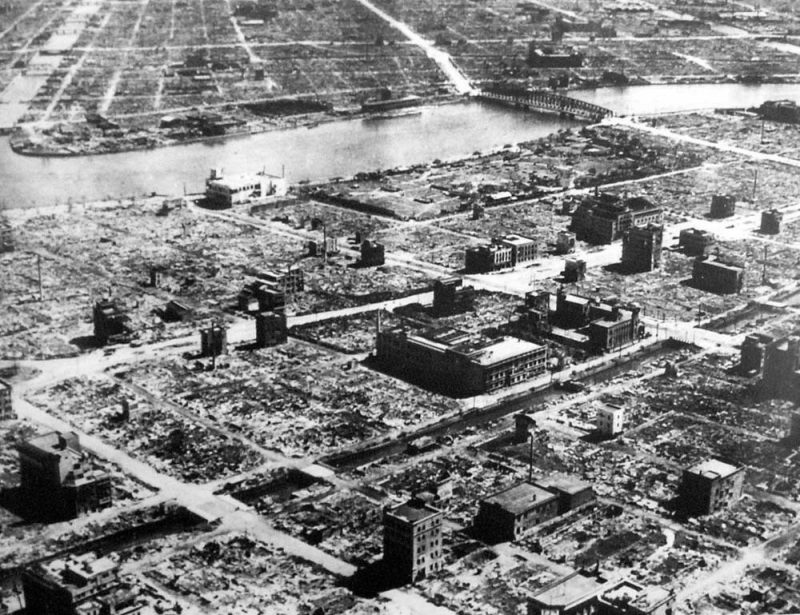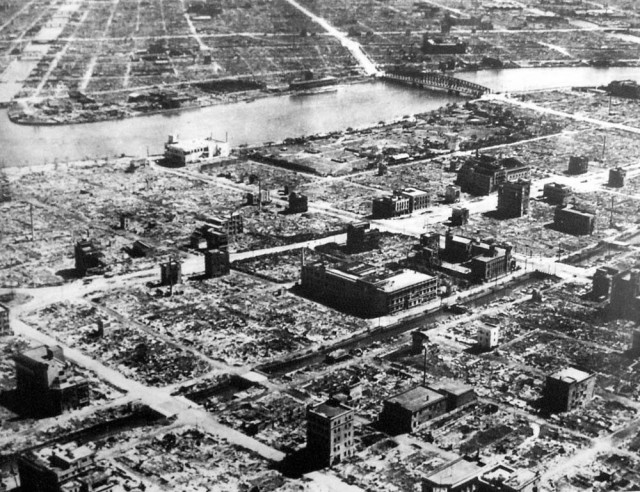In the final days of World War Two 70 years ago, US air attack took place on Tokyo in an attempt to force the Japanese to surrender.
Most commonly remembered are the atomic bombs dropped on Hiroshima and Nagasaki, but prior to that the single bombing raid in March 1945 was the biggest bombing raid of World War Two.
Around 100,000 civilians were killed and half the city’s buildings and facilities were destroyed.
The US had been waiting for the weather conditions to be exactly right for a deadly bombing raid on Tokyo. They needed little cloud cover and a slight wind. Those conditions came on 9th March and so around 300 US B-29 bombers were sent to destroy Tokyo.
The bombers dropped around half a million shells filled with napalm and petroleum jelly, since they wanted to devastate the population of the capital city.
This raid happened only a month after the controversial bombing of Dresden in Germany, where British and American bombers killed thousands of civilians.
One survivor, who was only 10 at the time, remembers how she fled the city after her family was killed in the bombing. Kisako Motoki ran to take cover at a bridge near to her home where she could stick out the attack.
The main killer was the fires set alight across Tokyo, Kisako remembers the fires were massive and fanned by the winds. Around 40 sq kms of Tokyo was set alight.
Kisako remembers seeing burnt bodies, pieces of bodies everywhere and as clearing began after the attack the bodies were piled together in high mounds.
Kisako believes that the US should be made to take responsibility for the attack, which at the time they believed would cause such destruction that the Japanese would be forces to surrender. It is also believed that it was a revenge attack for the bombing of Pearl Harbour and the vicious treatment of Allied prisoners going against Geneva Convention protocols throughout the war.
The bombing raid lasted for 48 hours and killed over 100,000 people, with another million injured and an additional million homeless, the ABC News reports.
Kisako recalls how at the time she was simply in shock, and even today, 70 years on, can see the bodies and remains littering the streets of Tokyo.
While the US and Japan today have good relations, survivors are hosting seminars for school children to ensure the future generations are educated about the attack and what happened during World War Two.

